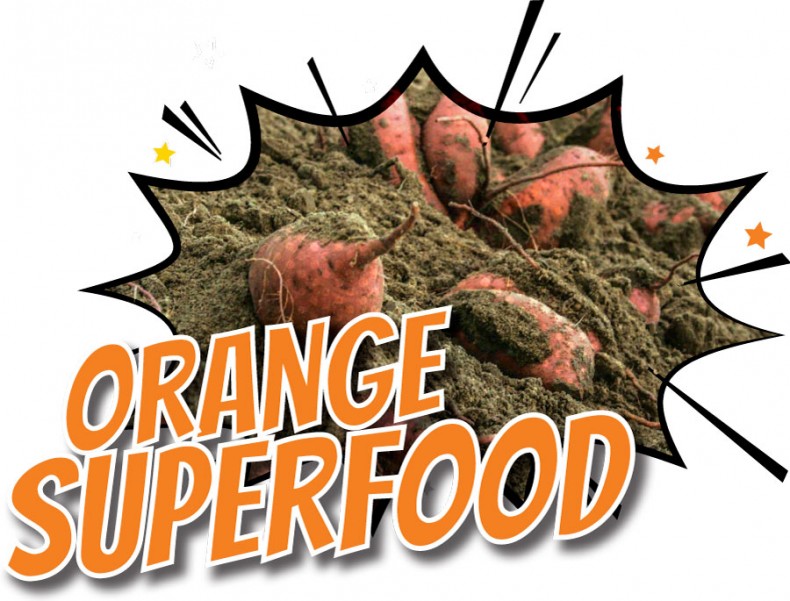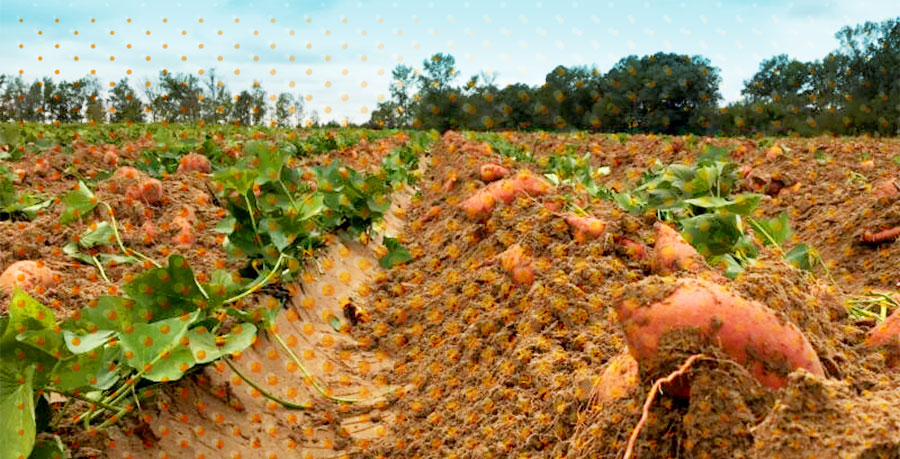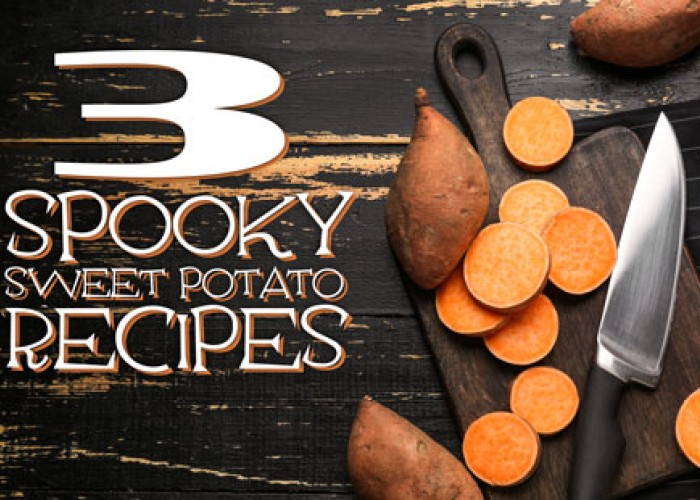The North Carolina Sweet Potato
Our state vegetable packs a punch
By Margaret Buranen | Photos courtesy of the NC SweetPotato CommissionNorth Carolina grows more sweet potatoes than any other state. Let that sink in. Our state’s total annual crop amounts to half of all of the sweet potatoes grown in the United States.
They sweeten the state’s economy, too. The 94,000 North Carolina acres where they are grown yielded a crop worth $324 million in 2019. Some of the largest NC sweet potato growers have offices in the United Kingdom for exports there and Europe.
“The level of nutritional value out of sweet potatoes is huge. They are one of the top ‘superfoods.’“
This is a hot time of year for sweet potatoes, our state vegetable, but uses for the flavorful root vegetables are not limited to holiday table side dishes.
“Sweet potatoes stand up to all kinds of cuisines and food types, from smoothies to vegetable tacos,” says Michelle Grainger, the North Carolina SweetPotato Commission’s executive director.
Working on behalf of the commission’s more than 400 sweet potato growers, Michelle keeps up with national food trends. While she grew up in NC enjoying “my grandma’s sweet potato soufflé,” Michelle has started branching out, eating sweet potatoes in dishes that aren’t desserts.
“I love the flavoring sweet potatoes give to ethnic foods — Indian, Mexican, Spanish dishes,” she says.
Her current favorite ways to eat sweet potatoes are tater tots and a savory dish that features sweet potatoes and crabmeat with melted cheese on top.
“On a fall or winter day, that dish is phenomenal,” she says.
Several varieties of sweet potatoes are grown in NC. They vary in color and taste. The most popular variety by far is Covington, developed at NC State University.
Covington is the only sweet potato variety grown at Tull Hill Farms in Kinston in Lenoir County. Co-owners Rob Hill and his dad Kendall Hill are members of Pitt and Greene Electric Cooperative. Rob’s cousin, Michael Hill, is also a partner in the farming operation.
For Rob Hill, growing sweet potatoes is a legacy.
“My great grandfather grew sweet potatoes. Then my grandfather started growing more of them,” he explains.
Sweet potato plants, aka slips, are transplanted into the soil from late May until about July 1. Some slips come from a greenhouse grower, who buys his stock from NC State. These plants are known as G1 (Generation One).
Small sweet potatoes saved from last fall’s harvest (then G1) are planted whole, around March 15. The slips they produce (called G2, for Second Generation) are also transplanted into growing fields starting in late May.
Harvesting comes about 100 days after the slips were planted. Around Labor Day, the farm workers first verify that the crop is ready to be harvested. They dig up sweet potatoes by hand in two or three separate sections, 10 or 12 feet into the field.
The plants, now grown to about two feet high, are shredded.

Get great sweet potato recipes like this Sweet Potato Gratin at ncsweetpotatoes.com.
Then a chain digger machine is used to go under each row of plants. It lays the potatoes on the ground. Workers pick them up by hand and load them on trucks for transport to the farm’s warehouse where they will be sorted.
The just-harvested sweet potatoes spend several days in the heated warehouse. This curing process heightens their sweetness. Then they are cooled (by air conditioning or ambient air, if the temperature is low enough). They can be stored in the warehouse for months without losing their flavor.
Rob says the biggest changes in sweet potato growing in the last 10 years are the export market and sweet potatoes for French fries.
“[For a typical acre’s yield], 45 percent of the sweet potatoes will be sold to supermarkets. Twenty-five percent will go to food processing companies for French fries,” he explains. “Ten percent will [be saved to] make seed potatoes for next year’s crop. The remaining 20 percent we try to get value for somehow or donate to food pantries.”
The sweet potato is surprisingly versatile. It’s big business for farmers across the state. But Michelle has learned that, just as people often don’t realize these sweet potato facts, they also aren’t aware of what a healthy food they are.
“The level of nutritional value out of sweet potatoes is huge,” she notes. “They are one of the top ‘superfoods.’”
Sweet potato or Sweetpotato?
Don’t be surprised if you see “sweetpotato,” as one word – it’s a correct way to spell it. The NC SweetPotato Commission uses that spelling, officially adopted by the National Sweetpotato Collaborators Group in 1989.
As the commission explains: “Sweetpotato (Ipomoea batatas) must not be confused … with the equally unique and distinctive potato (Solanum tuberosum) or the yam (Dioscorea sp.), which are also grown and marketed commercially in the United States.”
Want to learn more about sweet potatoes?
Find K–12 lesson plans at ncsweetpotatoes.com
About the Author
Margaret Buranen writes from her home in Kentucky.-
Even more on this amazing root vegetable
-
Share this story:








Comments (1)
Dave Steeves |
October 20, 2021 |
reply